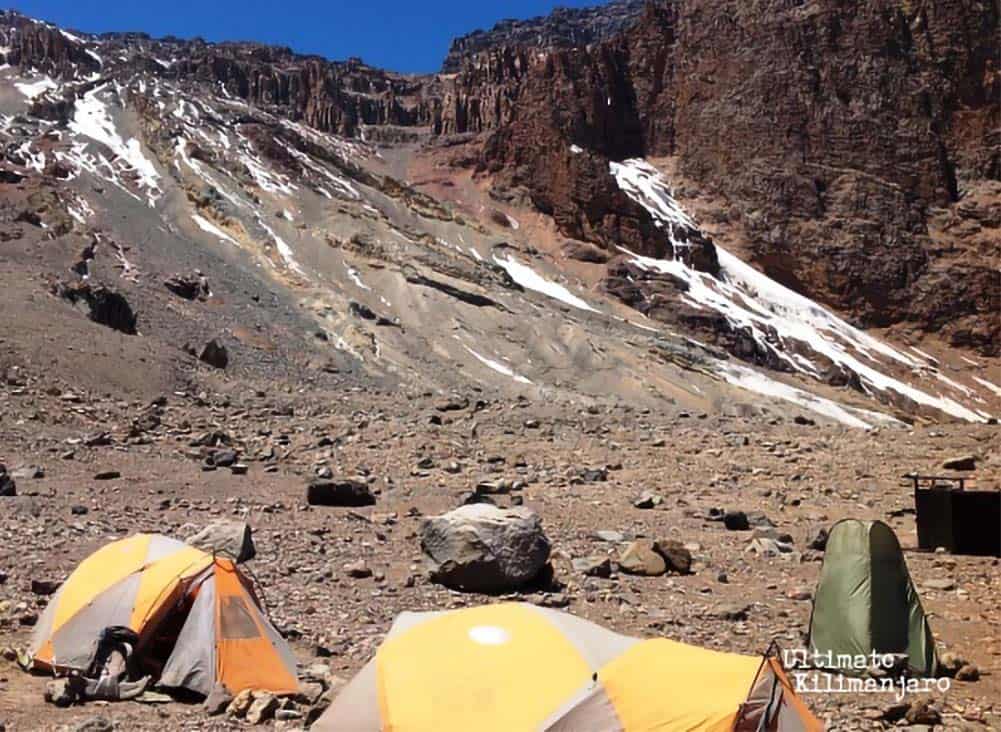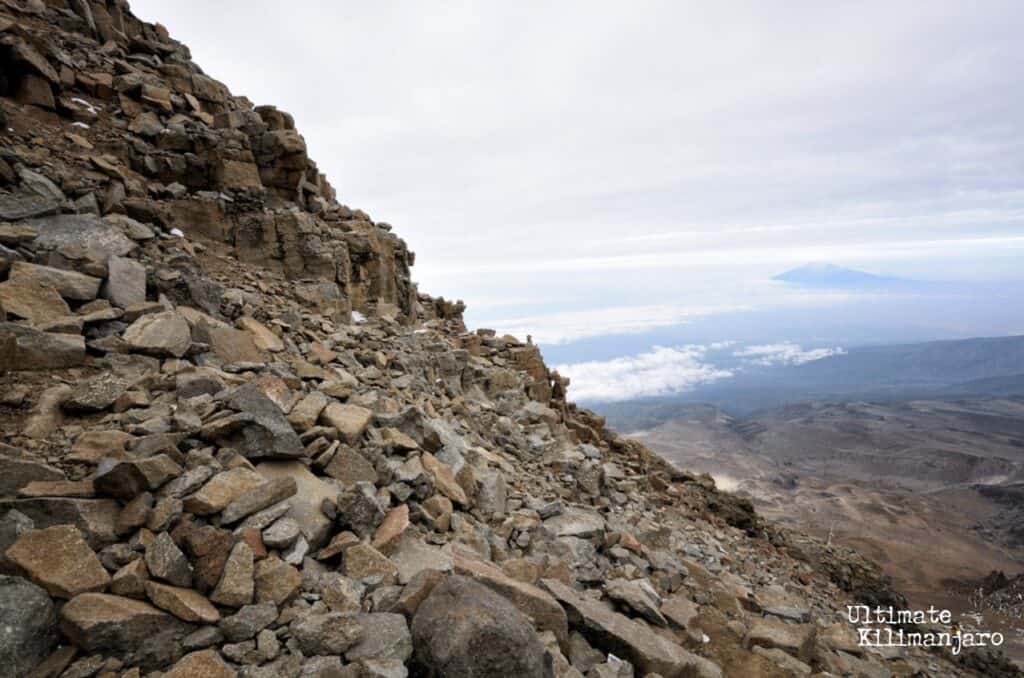
An alternative route to the summit approaches Uhuru Peak from the west, called the Western Breach.
The Western Breach connects Arrow Glacier to Crater Camp. The strenuous path ascends 2,800 ft (850 m) in about 1.25 miles (2 km) and requires some scrambling (climbing on hands and feet) at certain points. This route is very beautiful but also very challenging due to its rocky, steep slope.
The Western Breach was gaining popularity by climbers using the Umbwe, Lemosho, Shira and Machame routes until rockfall claimed the lives of three climbers in January 2006.
The accident started when an estimated 39 tons (86,000 lbs) of rock dislodged from the upper slopes. The rock slid down the slope at speeds up to 87 miles per hour (39 meters per second). The unfortunate victims were hiking 490 feet below (150 m) when they were fatally struck.
In response, Kilimanjaro National Park (KINAPA) closed the Western Breach.

The Western Breach re-opened in December 2007. The route was been modified to reduce exposure to rock slides. However, the route is still considered by prominent Kilimanjaro operators to be unsafe and to carry an unreasonable degree of risk.
In 2015, another accident occurred, killing three climbers and seriously injuring two others. As the victims were sleeping in their tents at Arrow Glacier camp, they were hit by falling boulders. One of the deceased was entrepreneur Scott Dinsmore, whose business helped people find and do work they love.
What makes the Western Breach problematic is that the geography of the mountain puts climbers into a dangerous channel. Tumbling rock is also funneled into this same area. And while ice used to hold loose rocks in place, the mountain is continuing to lose its ice due to glacial retreat. So as time goes on, rockfall will become more of a hazard.
Ultimate Kilimanjaro® does not utilize the Western Breach approach due to safety concerns for clients and staff.










































